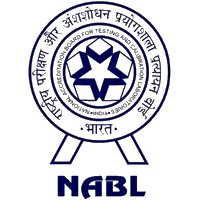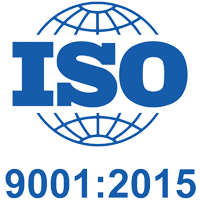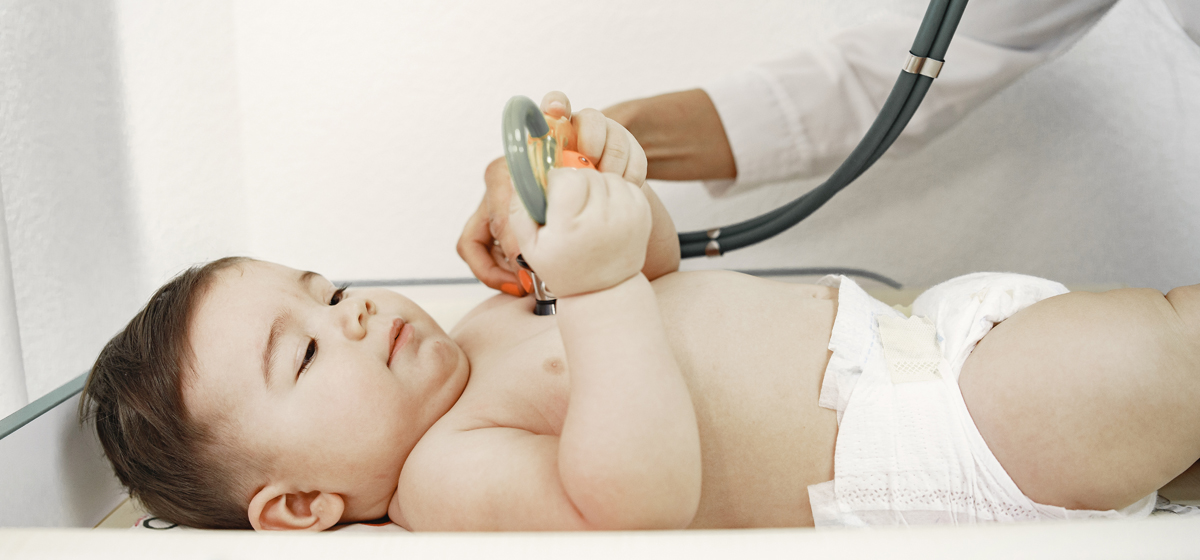Paediatric And Neonatology
Doctor List
Dr. Sibbakanti Datta MBBS, DCH, PG PN (Boston)
Dr. Parichaya Bera MBBS, DCH, DNB - Paediatrics & MRCPCH - PART I
Dr. Avijit Mitra MBBS, DNB (General Surgery) & MCh (Paediatric Surgery)
Dr. Sumana Kundagrami MBBS, MD (Paediatrics), MRCPCH - UK, Trainee Fellow in Paediatric Endocrinology
Dr. Shibsankar Barman MBBS, MS (Gen Surg) & M.Ch (Paediatric Surgery)
Dr. Kaushik Maulik MBBS, MD (Paed.), DNB (Paed.), DM (Paed.Critical Care)
Paediatrics is the branch of medicine dealing with the health and medical care of infants, children and adolescents from birth to the age of 18. Neonatology is a subspecialty of paediatrics and is a hospital based specialty, which is usually practiced in the Neonatal Intensive Care Unit (NICU). It consists of the medical care of newborn infants, especially, the ill or premature newborn who require special medical care due to prematurity, low birth weight, intrauterine growth restriction, congenital malformations (birth defects), sepsis, pulmonary hypoplasia or birth asphyxia. A medical doctor who specializes in the above is known as a paeditrician.
The department of Paediatrics at Ruby General Hospital provides comprehensive, affordable and quality health care in a state of the art facility and run by a team of experienced qualified, paediatricians for the future citizens of the country. The team provides superior quality, patient and family centered medical care to infants, children and adolescents. The department provides evidence – based, comprehensive healthcare to each patient.
The aim of the study of paediatrics is to reduce infant and child death rate, control the spread of infectious disease, ease the problems of children with chronic conditions and promote healthy lifestyle for a long disease-free life. The conditions diagnosed and treated among children by paediatricians include the following :
Injuries
Infections
Genetic and congenital conditions
Organ diseases and dysfunctions
Cancers
Paediatrics is not only about immediate management but also long term effects on the quality of life of the child, disability and their survival. Paediatricians are also involved with the prevention, early detection and management of problems like developmental delays and disorders, behavioural problems, functional disabilities, social stresses, and mental disorders (depression and anxiety).
The department of paediatrics was envisioned in order to provide comprehensive, affordable and quality healthcare to all children and the department is run by a team of experienced and qualified paediatricians. The Paediatric Intensive Care Unit (PICU) and Neonatal Intensive Care Unit (NICU) are equipped to manage extremely sick and critically ill children. Both PICU and NICU are equipped to manage children with respiratory failure, cardiovascular instability, severe asthma, seizures, sepsis, multi organ failure, ingestions, poisoning and polytrauma. The units have facilities for continuous patient monitoring using high end technology and life support therapy. There is also provision of high frequency oscillatory ventilation and nitric oxide therapy for salvaging extremely critical babies who have intractable respiratory failure.
The diseases which are of concern during the neonatal period, i.e., the first four weeks of a child’s life include the following :
Injuries
Infections
Genetic and congenital conditions
Organ diseases and dysfunctions
Cancers
Anaemia and apnea of prematurity
Atrial and atrioventricular septal defect
Brachial plexus injury
Benign / Diffuse neonatal hemangiomatosis
Bronchopulmonary dysplasia
Cerebral palsy
Cleft palate
CHARGE syndrome
Congenital adrenal hyperplasia / diaphragmatic hernia / heart disease
Encephalocele
Gastroschisis
Inborn errors of metabolism
Intraventricular haemorrhage
Neonatal cancer / jaundice / respiratory distress syndrome / conjunctivitis / pneumonia / tetanus / sepsis / bowel obstruction / stroke / diabetes mellitus / herpes simplex / meningitis/ hepatitis / seizure / hypoglycaemia / alloimmune thrombocytopenia / cholestatis / haemochromatosis
Perinatal asphyxia
Retinopathy of prematurity
Tricuspid atresia
Ventricular septal defect
Vertically transmitted infections
Transient tachypnea of the newborn
Tracheoesophageal fistula
Pulmonary hypoplasia
Hemolytic disease of the newborn
Neonatal lupus erythematosus
Necrotizing enterocolitis
Meconium aspiration syndrome
Spinal muscular atrophy
Supraventricular tachycardia
Persistent pulmonary hypertension of the newborn
DiGeorge syndrome
Omphalocele
Patent ductus arteriosus
Common Paediatric Medical Procedures
Nursemaid’s Elbow – It is a common elbow injury among young children and toddlers and sometimes referred to as “pulled elbow” because it occurs when a child’s elbow is pulled and gets partially dislocated. This injury was named during a time when nursemaids or nannies commonly cared for the children and caused such injuries by pulling on a child’s outstretched arms. The medical term is “radial head subluxation” and occurs mostly among children in the age of 1 to 4 years old as a young child’s bones and muscles are still developing, it takes very little force to pull the bones of the elbow partially out of place, making this injury very common. The elbow bone (radius) is connected to the elbow joint (humerus) by elastic bands called ligaments which grow stronger and tighter as a child grows older, thus, making it easy for the elbow to slip out of place in babies and kids. It is seen that girls are more likely to have nursemaid’s elbow than boys.
Bladder Catheterization –Urinary bladder catheterization in children serves as both diagnostic and therapeutic intervention. It is a simple and sterile procedure which has largely replaced suprapubic aspiration as the primary method of urine collection in young children and it can be easily performed by nurses with decreased pain. The most common reason for urinary bladder catheterization is collection of sterile urine sample for analysis and culture from very young children who cannot void on command. This procedure is also done to relieve acute or chronic urinary retention (Obstructive uropathy) or obstruction due to anatomic abnormalities such as posterior urethral valves or prolapsing ureterocele, inflammation of the urethra, or mechanical obstruction related to blood clots or debris in the bladder. Neurogenic bladder is another reason for urine retention and requiring intermittent catheterization. Bladder catheterization is also done for less common reasons like instillation of contrast agent for cystourethrography, bladder irrigation and instillation of a drug.
Incision and Drainage of Abscess - An abscess is a confined collection of pus surrounded by inflamed tissue. It is an infected area of skin where bacteria, which normally live on the skin gets trapped under the skin, causing fluid or pus to form. Sometimes bacteria enter the skin through a hair root, cut or scrape in the skin. Abscesses often occur on hairy skin or skin exposed to friction and sweat. Most abscesses are found on the extremities, buttocks, breast, axilla, groin, and areas prone to friction or minor trauma. It can also be caused by an ingrown hair, puncture wound, a foreign object lodged under the skin, insect bite or by a blocked oil gland, heavy or frequent sweating, pimple or cyst. The most common microorganisms leading to abscess formation are Staphylococcus, aureus and Streptococcus. Perianal abscesses are commonly caused by enteric organisms.
Medicine may be given to treat an abscess and decrease the pain and swelling. In some cases, the abscess is cut and the pus is drained out which is known as incision and drainage and sometimes called lancing. The abscess is likely to drain sometimes through a small piece of tubing left in the cut to let drainage come out for several days and sometimes it takes several weeks to dry up. Smaller abscesses may resolve spontaneously with the application of warm compresses and antibiotic therapy, while, larger abscesses require incision and drainage due to an increased collection of pus, inflammation and formation of the abscess cavity. If the abscess is on the ands and buttocks then it is removed surgically. Untreated abscesses may either remain deep and slowly reabsorb, or the overlying epithelium may attenuate leading to a spontaneous rupture to the surface and drain. There is a difference between cellulitis and abscess, as the treatment for cellulitis is antibiotic therapy without drainage. The classic characteristics of an abscess are erythema, induration, tenderness to palpitation and fluctuance.
Umbilical Catheterization - This is a life saving procedure in neonates who require vascular access and resuscitation. After proper placement of the umbilical line, intravenous (IV) fluids and medication may be administered to critically ill neonates. The exposed umbilical stump in a neonate is utilized as a site for emergency central venous access up to 14 days old.
Heart murmur exam – Heart murmurs are extra or abnormal sound made by turbulent blood as it flows through the heart. During the exam, the doctor listens to the heart with a stethoscope. There are two kinds of murmurs : innocent and pathologic murmurs. More than half of all kids have a heart murmur at some time in their lives and most do not mean anything is wrong. In some cases, surgery is necessary and depending on the problem, doctors patch a hole in the heart, fix a valve, rebuilds a blood vessel or stretch open a blood vessel that is too narrow.
Unique Cases
VENTRICULOPERITONEAL (VP) SHUNTING IN A 2 MONTH OLD BABY
A 2 month old preterm male baby, one of twins, presented at Ruby General Hospital as a case of perventricular leukomalacia... Read More
FAITH STRENGTHENS OUR FADING HOPES
A 30 year old lady was admitted with 25 weeks of gestation due to premature rupture of membrane... Read More
THE DARKEST HOUR COMES JUST BEFORE DAWN
A 28 days old male baby had been admitted in the NICU of Ruby General Hospital under the expert care of Dr. Anirban Basu (Consultant Paediatrician) with complaints of severe respiratory distress... Read More
TUBERCULAR MENINGITIS WITH CEREBRAL SALT WASTING (CSW) AND DIABETES INSIPIDUS
A 10 year old boy had been presented in Ruby General Hospital with a history of low grade fever for a fortnight associated with occasional chills and headache along with a few episodes of vomiting... Read More
NURTURING THE RYTHMN OF LIFE WITH A HUMAN TOUCH
A 6 year 2 months old female child had been presented in the emergency of Ruby General Hospital after accidently falling into a nearby pond... Read More
A FADING LIGHT BECOMES THE RAY OF DAWN
A 32 weeks preterm baby girl had been delivered with almost four weeks intrauterine growth retardation... Read More
LUMBOSACRAL LIPOMENINGOCELE IN A ONE AND HALF YEAR OLD BABY
A one and a half year old baby girl from Bangladesh had been presented at Ruby General Hospital with complaints of... Read More
PYOGENIC MENINGITIS WITH MIS-C AND LEFT SIDED HEMIPARESIS
A 6 year old female child had been admitted under the care of Dr. Anirban Basu (Consultant Paediatric)... Read More
Common Ailments Like Fever, Cold And Cough Should Not Be Ignored
A nine year old boy had been admitted under the care of Dr. Anirban Basu (Consultant Paediatric) with complaints of high grade fever for 6 days, cough and cold for 7 days and erythematous... Read More
Tumour Lysis Syndrome (Tls) And Posterior Reversible Encephalopathy Syndrome (Pres) Checked In Time To Save A Child
A 7 year old child had been presented at the Emergency department of Ruby General Hospital with a history of fever for 25 days associated with severe body ache, abdominal pain and shortness of breath (SOB)... Read More
New Life Of A Pair Of Twins Amidst The Pandemic
A mother’s universe is her children and has an indomitable willpower to overcome all odds to nurture them. Similarly, a mother’s universe, who were her pair of twins, a boy and a girl, aged 6 days old had been admitted in Ruby General Hospital... Read More
A Narrow Escape
A 11 year 6 months old boy had been presented at the Emergency Department of Ruby General Hospital in the early hours of the morning. He had been referred to Ruby General Hospital... Read More
Quick links
- Emergency Services
- International Patient Services
- Corporate Tie-Up
- TPA & Cashless Facilities
- Find a Doctor





















